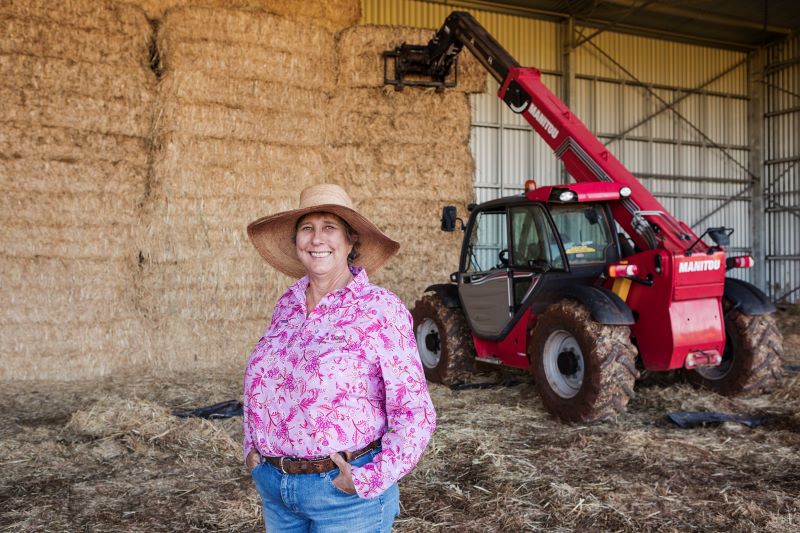Farmers use RIC loan to speed up drought management plans to prepare for dry conditions

Michelle Walton-Hassell and her husband John used a RIC (Regional Investment Corporation) loan to prepare their mixed farm business for dry conditions and improve its financial position for succession.
The third-generation farmers own and manage a 2,600-hectare sheep and grain farm at Pingelly, in the Western Australia wheatbelt.
The couple grow a mix of crops including canola, barley, oats, lupins, and wheat, but rainfall deficiencies since mid-2023 meant below-average yields.
“The weather hasn’t been kind — a dry finish last year so we didn’t have the grain filled as what we were hoping,” Michelle said.
The couple also normally run 3,500 non-mulesing merino ewes, producing more than 100 bales a year of fine wool.
Low prices offered at the saleyards have meant they have held onto double the number of livestock, putting additional pressure on the available feed.
“We’re going okay, however, if we didn’t do the things that we did with our RIC loan then I’m not sure what position we’d be in,” she said.
Fast-tracking improvements for drought management

Michelle and John successfully applied for a RIC Drought Loan after experiencing what was one of their most severe droughts between 2017 – 2020.
To meet a key eligibility requirement, they submitted a drought management plan which detailed the steps to improve the farm for future climatic challenges.
“We knew what we had to do,” Michelle said, “but just going through the [drought management plan] process basically formalised it.”
“It had been verbalised but not been put into a written form to tell somebody else this is what we want to do.”
They refinanced their existing commercial debt and used the improved cash flow from the reduced interest payments to install new infrastructure.

They built a large hay shed in the middle of the farm to store enough fodder to last at least two years.
“The benefit is that we can store the hay under cover, so it doesn’t get weathered on,” she said.
To catch any rainwater that fell on the shed roof, they installed a 250,000-litre water tank and ran underground pipe to drinking troughs.
They also paid for earthworks to clean up catchment contours and scrape silt out of 23 dams to improve their water capacity.
“There was one dam that had water in it that we did not clean out, and that is the only dam that has gone dry this year,” she said.
The Hassells also used the loan finances to pay for machinery maintenance and purchased a neighbouring block of land, with existing sheds and yards, to expand the farm.

Benefits of concessional loan terms
Michelle said the improved cash flow from the RIC loan allowed them to make the farm improvements in a short amount of time.
“To do what we wanted to do for the drought management it would have taken us a long time to get it done,” she said.
“Going through the RIC loan we got it done within 12 months which then put us on a good track.”
The RIC’s low variable interest rates, which are reviewed every six months, along with a 10-year loan term also provided financial stability for their business.
“You actually know where you stand, you know what’s coming up, you know what the interest rate is going to be,” she said.
“Knowing that the money is secure and know where you stand has been less stressful.”

Succession planning in the works
All three of the Hassells' children are involved in agriculture, with their 27-year-old son and 30-year-old daughter now working on the farm.
Over the next 5 years Michelle and John plan to enact succession arrangements to allow their children to take on the farm management.
Michelle said she felt honoured that her children wanted to follow in her footsteps.
“It makes me feel really chuffed and humbled,” she said.
“It’s great seeing the little grandchildren coming along, being outdoors and enjoying farm life as well.”
